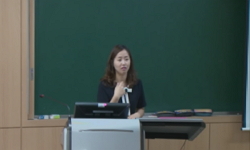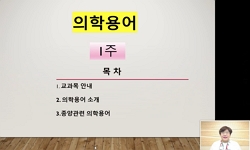Purpose: The aims of this study were to assess the prevalence of nocturia and nocturnal polyuria (NP) and to define new cutoff values according to age and sex for both conditions. Methods: Data from a population-based prevalence survey conducted among...
http://chineseinput.net/에서 pinyin(병음)방식으로 중국어를 변환할 수 있습니다.
변환된 중국어를 복사하여 사용하시면 됩니다.
- 中文 을 입력하시려면 zhongwen을 입력하시고 space를누르시면됩니다.
- 北京 을 입력하시려면 beijing을 입력하시고 space를 누르시면 됩니다.



The Prevalence of Nocturia and Nocturnal Polyuria: Can New Cutoff Values Be Suggested According to Age and Sex?
한글로보기https://www.riss.kr/link?id=A103571021
-
저자
Ali Ersin Zumrutbas (Department of Urology, Pamukkale University, Faculty of Medicine) ; Ali Ihsan Bozkurt (Department of Public Health, Pamukkale University School of Medicine) ; Okan Alkis (Department of Urology, Pamukkale University School of Medicine) ; Cihan Toktas (Department of Urology, Pamukkale University School of Medicine) ; Bulent Cetinel (Department of Urology, Istanbul University Cerrahpasa School of Medicine) ; Zafer Aybek (Department of Urology, Pamukkale University School of Medicine)
- 발행기관
- 학술지명
- 권호사항
-
발행연도
2016
-
작성언어
English
- 주제어
-
등재정보
KCI등재,SCIE,SCOPUS
-
자료형태
학술저널
- 발행기관 URL
-
수록면
304-310(7쪽)
-
KCI 피인용횟수
9
- 제공처
-
0
상세조회 -
0
다운로드
부가정보
다국어 초록 (Multilingual Abstract)
Methods: Data from a population-based prevalence survey conducted among a random sample of 2,128 adults were analyzed in this study. Participants were requested to fill out a questionnaire including the International Continence Society (ICS) definitions of lower urinary tract symptoms and the International Consultation on Incontinence Questionnaire - Short Form. Additionally, a 1-day bladder diary was given to each individual. The participants were divided into 5 age groups. The prevalence of nocturia was calculated based on definitions of nocturia as ≥1 voiding episodes, ≥2 episodes, and ≥3 episodes. NP was evaluated according to the ICS definition. The mean±standard errors and 95th percentile values were calculated in each group as new cutoff values for NP.
Results: The prevalence of nocturia was estimated as 28.4%, 17.6%, and 8.9% for ≥1, ≥2, and ≥3 voiding episodes each night, respectively. When nocturia was defined as 2 or more voiding episodes at night, the prevalence decreased significantly.
The mean NP index was 29.4%±15.0% in men and 23.1%±11.8% in women. For the age groups of <50 years, 50–59 years, and ≥60 years, the new cutoff values for the diagnosis of NP were calculated as 48%, 69%, and 59% for men and 41%, 50%, and 42% for women, respectively.
Conclusions: We found that the definition of nocturia was still controversial and that waking up once for voiding might be within the normal spectrum of behavior. The definition of NP should be modified, and new cutoff values should be defined using the data presented in our study and in other forthcoming studies.
Purpose: The aims of this study were to assess the prevalence of nocturia and nocturnal polyuria (NP) and to define new cutoff values according to age and sex for both conditions.
Methods: Data from a population-based prevalence survey conducted among a random sample of 2,128 adults were analyzed in this study. Participants were requested to fill out a questionnaire including the International Continence Society (ICS) definitions of lower urinary tract symptoms and the International Consultation on Incontinence Questionnaire - Short Form. Additionally, a 1-day bladder diary was given to each individual. The participants were divided into 5 age groups. The prevalence of nocturia was calculated based on definitions of nocturia as ≥1 voiding episodes, ≥2 episodes, and ≥3 episodes. NP was evaluated according to the ICS definition. The mean±standard errors and 95th percentile values were calculated in each group as new cutoff values for NP.
Results: The prevalence of nocturia was estimated as 28.4%, 17.6%, and 8.9% for ≥1, ≥2, and ≥3 voiding episodes each night, respectively. When nocturia was defined as 2 or more voiding episodes at night, the prevalence decreased significantly.
The mean NP index was 29.4%±15.0% in men and 23.1%±11.8% in women. For the age groups of <50 years, 50–59 years, and ≥60 years, the new cutoff values for the diagnosis of NP were calculated as 48%, 69%, and 59% for men and 41%, 50%, and 42% for women, respectively.
Conclusions: We found that the definition of nocturia was still controversial and that waking up once for voiding might be within the normal spectrum of behavior. The definition of NP should be modified, and new cutoff values should be defined using the data presented in our study and in other forthcoming studies.
참고문헌 (Reference)
1 Bosch JL, "Would a new definition and classification of nocturia and nocturnal polyuria improve our management of patients? ICIRS 2014" 35 : 283-287, 2016
2 Rembratt A, "What is nocturnal polyuria?" 90 (90): 18-20, 2002
3 van Kerrebroeck P, "The standardisation of terminology in nocturia: report from the Standardisation Sub-committee of the International Continence Society" 21 : 179-183, 2002
4 Coyne KS, "The prevalence of nocturia and its effect on health-related quality of life and sleep in a community sample in the USA" 92 : 948-954, 2003
5 Bosch JL, "The prevalence and causes of nocturia" 184 : 440-446, 2010
6 Weiss JP, "The New England Research Institutes, Inc. (NERI)Nocturia Advisory Conference 2012: focus on outcomes of therapy" 111 : 700-716, 2013
7 Blanker MH, "Relation between nocturnal voiding frequency and nocturnal urine production in older men:a population-based study" 60 : 612-616, 2002
8 Zumrutbas AE, "Prevalence of lower urinary tract symptoms, overactive bladder and urinary incontinence in western Turkey: results of a population-based survey" 21 : 1027-1033, 2014
9 Kirkland JL, "Patterns of urine flow and electrolyte excretion in healthy elderly people" 287 : 1665-1667, 1983
10 Robertson G, "Pathophysiology and treatment of enuresis in adults" 202 : 36-38, 1999
1 Bosch JL, "Would a new definition and classification of nocturia and nocturnal polyuria improve our management of patients? ICIRS 2014" 35 : 283-287, 2016
2 Rembratt A, "What is nocturnal polyuria?" 90 (90): 18-20, 2002
3 van Kerrebroeck P, "The standardisation of terminology in nocturia: report from the Standardisation Sub-committee of the International Continence Society" 21 : 179-183, 2002
4 Coyne KS, "The prevalence of nocturia and its effect on health-related quality of life and sleep in a community sample in the USA" 92 : 948-954, 2003
5 Bosch JL, "The prevalence and causes of nocturia" 184 : 440-446, 2010
6 Weiss JP, "The New England Research Institutes, Inc. (NERI)Nocturia Advisory Conference 2012: focus on outcomes of therapy" 111 : 700-716, 2013
7 Blanker MH, "Relation between nocturnal voiding frequency and nocturnal urine production in older men:a population-based study" 60 : 612-616, 2002
8 Zumrutbas AE, "Prevalence of lower urinary tract symptoms, overactive bladder and urinary incontinence in western Turkey: results of a population-based survey" 21 : 1027-1033, 2014
9 Kirkland JL, "Patterns of urine flow and electrolyte excretion in healthy elderly people" 287 : 1665-1667, 1983
10 Robertson G, "Pathophysiology and treatment of enuresis in adults" 202 : 36-38, 1999
11 van Doorn B, "Once nocturia, always nocturia? Natural history of nocturia in older men based on frequency-volume charts: the Krimpen study" 186 : 1956-1961, 2011
12 Madersbacher S, "Nocturnal polyuria: it’s all about definition, and be Patient!" 63 : 548-550, 2013
13 Homma Y, "Nocturia in the adult: classification on the basis of largest voided volume and nocturnal urine production" 163 : 777-781, 2000
14 Asplund R, "Nocturia in relation to somatic health, mental health and pain in adult men and women" 95 : 816-819, 2005
15 Weiss JP, "Nocturia Think Tank: focus on nocturnal polyuria: ICI-RS 2011" 31 : 330-339, 2012
16 Weiss JP, "Evaluation of the etiology of nocturia in men: the nocturia and nocturnal bladder capacity indices" 18 : 559-565, 1999
17 Asplund R, "Desmopressin for the treatment of nocturnal polyuria in the elderly: a dose titration study" 82 : 642-646, 1998
18 Kupelian V, "Association of nocturia and mortality: results from the Third National Health and Nutrition Examination Survey" 185 : 571-577, 2011
19 van Haarst EP, "A cutoff value based on analysis of a reference population decreases overestimation of the prevalence of nocturnal polyuria" 188 : 869-873, 2012
20 Cornu JN, "A contemporary assessment of nocturia: definition, epidemiology, pathophysiology, and management--a systematic review and meta-analysis" 62 : 877-890, 2012
동일학술지(권/호) 다른 논문
-
Nocturia Improvement With Surgical Correction of Sleep Apnea
- 대한배뇨장애요실금학회
- 박형근
- 2016
- KCI등재,SCIE,SCOPUS
-
- 대한배뇨장애요실금학회
- 최훈
- 2016
- KCI등재,SCIE,SCOPUS
-
- 대한배뇨장애요실금학회
- 김수강
- 2016
- KCI등재,SCIE,SCOPUS
-
Factors Affecting Quality of Life Among Spinal Cord Injury Patients in Korea
- 대한배뇨장애요실금학회
- 이종수
- 2016
- KCI등재,SCIE,SCOPUS
분석정보
인용정보 인용지수 설명보기
학술지 이력
| 연월일 | 이력구분 | 이력상세 | 등재구분 |
|---|---|---|---|
| 2023 | 평가예정 | 해외DB학술지평가 신청대상 (해외등재 학술지 평가) | |
| 2020-01-01 | 평가 | 등재학술지 유지 (해외등재 학술지 평가) |  |
| 2012-01-01 | 평가 | 등재 1차 FAIL (등재유지) |  |
| 2010-04-30 | 학술지명변경 | 한글명 : 대한배뇨장애요실금학회지 -> International Neurourology Journal외국어명 : The Journal of Korean Continence Society -> International Neurourology Journal |  |
| 2009-01-01 | 평가 | 등재학술지 선정 (등재후보2차) |  |
| 2008-01-01 | 평가 | 등재후보 1차 PASS (등재후보1차) |  |
| 2007-04-26 | 학술지명변경 | 한글명 : 대한배뇨장애 및 요실금학회지 -> 대한배뇨장애요실금학회지외국어명 : 미등록 -> The Journal of Korean Continence Society |  |
| 2007-03-13 | 학회명변경 | 한글명 : 대한배뇨장애 및 요실금학회 -> 대한배뇨장애요실금학회 |  |
| 2007-01-01 | 평가 | 등재후보학술지 유지 (등재후보1차) |  |
| 2006-03-29 | 학술지명변경 | 한글명 : 대한배뇨장애 및 요실금학회지 Vol.5, No.1 -> 대한배뇨장애 및 요실금학회지 |  |
| 2005-01-01 | 평가 | 등재후보학술지 선정 (신규평가) |  |
학술지 인용정보
| 기준연도 | WOS-KCI 통합IF(2년) | KCIF(2년) | KCIF(3년) |
|---|---|---|---|
| 2016 | 1.74 | 0.51 | 1.26 |
| KCIF(4년) | KCIF(5년) | 중심성지수(3년) | 즉시성지수 |
| 0.96 | 0.75 | 0.628 | 0.03 |




 KCI
KCI






